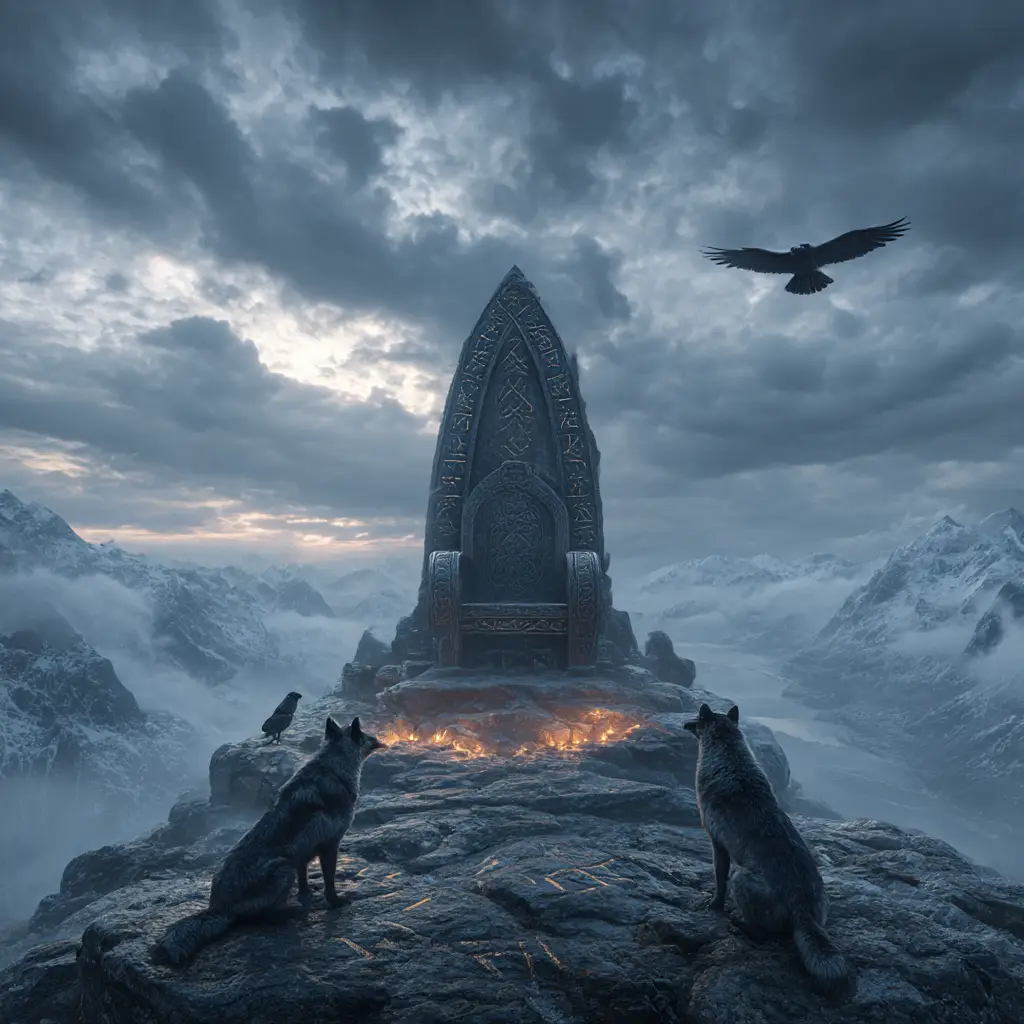Odin’s Throne, Hlithskjalf
Hlithskjalf, also known as Hliðskjálf in Old Norse, is the legendary high seat of Odin, the Allfather in Norse mythology. From this throne, Odin is said to have the power to see across all the Nine Realms, observing the deeds of gods, giants, and mortals alike. Hlithskjalf represents not only Odin’s authority as ruler of Asgard but also his insatiable pursuit of knowledge and understanding.
The throne is described as being positioned within Valaskjalf, Odin’s shining silver hall in Asgard. When Odin sits upon Hlithskjalf, he gains vision over all things that happen in the world, both seen and unseen. This all-seeing ability reflects his role as the god of wisdom, war, and fate. Few others are permitted to sit in this sacred seat, as it grants a level of divine awareness and insight beyond that of most gods. According to myth, even Frigg, Odin’s wife and queen of the Aesir, has occasionally sat upon Hlithskjalf to look into the worlds below.
Hlithskjalf embodies Odin’s connection to knowledge, foresight, and the cosmic order. It symbolises his role as the watcher and protector of the realms, ever vigilant against the threats that arise from Jotunheim, Midgard, and beyond. The throne’s elevated position and its association with vision and wisdom are central to Odin’s identity, portraying him not as a distant ruler but as an active observer, guiding destiny through understanding rather than mere power.
In literature and art, Hlithskjalf often appears as a majestic seat of silver or stone, high above the halls of Asgard. It stands as a reminder of Odin’s unique place among the gods—a being who sacrifices comfort and even parts of himself in the endless search for wisdom. Hlithskjalf is not only a throne of rule but a throne of knowledge, linking Odin to the mysteries of the cosmos and the fate of all living things.



